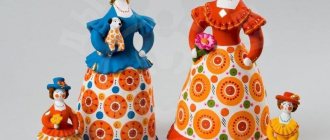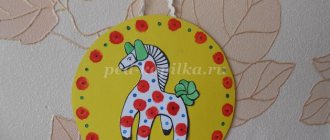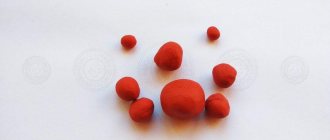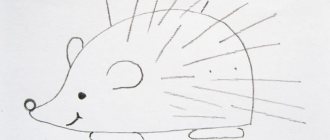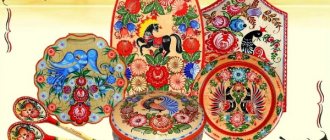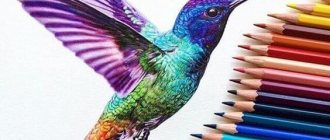The craft that emerged in the city of Gorodets, Nizhny Novgorod province, became one of the main assets of folk art of the 19th century. The creativity that arose from the decoration of carved spinning wheels has become bright and memorable, and its originality still attracts drawing lovers today. Gorodets painting - step-by-step drawing, a detailed explanation of each step in the traditional painting algorithm can be found here.
Features of Gorodets painting
The main difference between this craft is its content. Each element of the image serves as a storyteller, painting not only a visually appealing series, but also an entire story. The apotheosis of the meaningfulness of Gorodets painting is genre scenes. They are free and quite conventional in nature, sometimes even bordering on caricature. But at the same time, they are very interesting to look at and “read.”
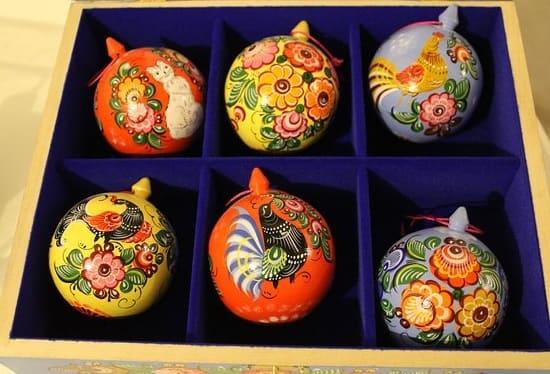
In Gorodets painting, realistic motifs often coexist with idealized ones. The images of animals and birds are very decorative. On painted items you can see lions and leopards, which, naturally, were exotic animals for Russia. But even the usual horse appears on the painted board as a hot, strong, and at the same time graceful animal, his pose is proud and warlike, and he himself appears not as a draft force, but as a royal animal.
It is not uncommon for Gorodets painting to have paired images, elements facing each other.
It is not uncommon for Gorodets painting to have paired images, elements facing each other. Where the plot requires it, the artist uses the motif of a magnificent curtain. The most preferred colors: bright red, expressive green, deep blue, black. The painting is done with a brush; no preliminary drawing is applied. The technique involves both broad strokes and the finest lines, the virtuosity of drawing which requires skill and experience.
History of the fishery
Each folk craft has its own beautiful story about its origin. Gorodets painting also has it. Every village has long celebrated the holiday of Ivan Kupala. They burned bonfires, guessed fate on wreaths, and collected herbs to ward off unclean spirits. They searched through the forests for a fern flower that blooms only one night a year, and whoever finds it will receive good luck, happiness, wealth and success in all matters. No one knew what he looked like, everyone gave him his own color - yellow, blue, red, even black, but everyone knew that he was the most beautiful. And when Nizhny Novgorod craftsmen began to decorate their wooden products - spinning wheels, children's toys, kitchen utensils, then extraordinary flowers bloomed on their works - sunny, blue, fiery red and black. They were called kupava, roses, but they did not look like any known flower. And the leaves around it were of fern. So, each master found his own flower, which brought him happiness, prosperity, and success in business.
A spinning wheel is a necessary thing in a peasant family. No one will marry a girl if she doesn’t know how to spin, and the most offensive nickname for such people is “non-spinner.” Each family had its own dismountable spinning wheel, and more than one. After work, the bottom - a wooden plank on which the comb was fixed - was hung on the wall. The spinning wheel was an indispensable wedding gift. Gradually, paintings began to be applied to them. The bottom was chosen to be colorful and elegant. It is unknown in which Volga village the first painted, outlandish spinning wheels appeared, but they were immediately sold out at fairs.
Towards the end of the nineteenth century, cheap fabrics became available. The spinning wheels were put into chests, and master carvers began to decorate things, dishes, household items, shovels, children's horses, toys and furniture.
Required materials2>
If you are just starting to paint using the Gorodets painting technique, you will need a basic beginner’s set: brushes of different sizes and different materials (the main requirement is that your hand should be comfortable working with this tool), gouache or acrylic paints.

There is no need to draw a sketch on the product itself that will be painted. But for beginners, such a stage will not be superfluous if the hand does not yet work confidently enough with paint. Therefore, you will need both a pencil and an eraser. You will need water to wet the brush and a palette to test the color.
The standard method is to start with a sketch on watercolor paper, when a picture is drawn in detail on the sheet, which will then decorate the wooden product. This “gets the hang of things”, gives the artist confidence, and reduces the risk of mistakes.
Working with Templates
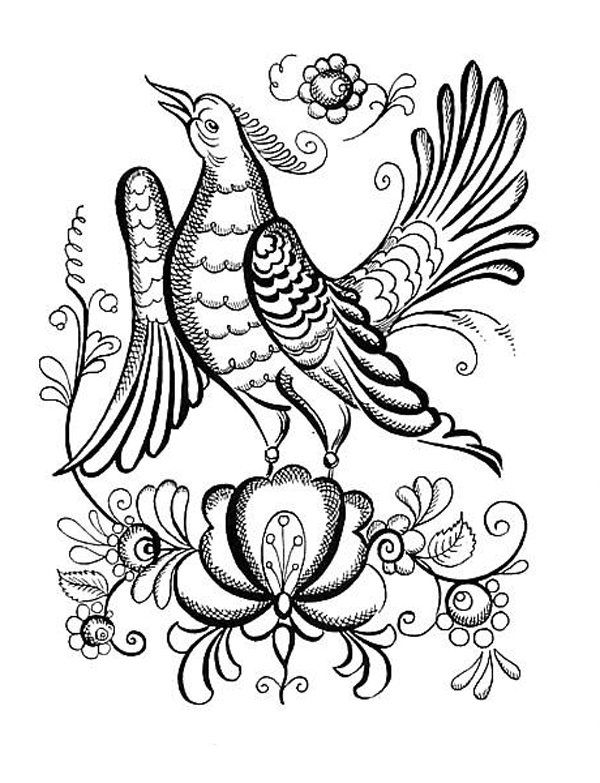
Stencils are often used in cases where it is necessary to speed up or simplify the process. They can also be useful in classes with preschoolers and technology lessons in 2nd grade. Templates for Gorodets painting are cut out by children or a teacher.
In institutions of additional education, as well as in secondary schools, lessons are provided on folk crafts, in particular, painting. The teacher can choose the form of the activity at his own discretion, including deciding whether the children will draw according to templates, without them, or cut and glue appliqués.
Classes in both cases are conducted in a similar way, but there are also differences.
Lesson with applique
Work with appliques begins with the fact that during recess children prepare napkins, scissors, backing sheets, colored pencils and glue. The teacher shows slides, tells how Gorodets painting differs from other types, talks about kupavka, rose, rosana and chamomile, as well as other elements. Then the children get acquainted with the plan for making a painted tablet. To create an application they need to do the following:
- cut out leaves and roses;
- make a drawing;
- glue the elements to the cardboard;
- cut out the bird;
- glue it;
- complete the missing details;
- bring the drawing to life.
Master class in Gorodets painting
Elements of Gorodets painting in stages - you definitely need to learn this, because the sequence of execution is very important in traditional creativity. Copyright inclusions should be minimal.
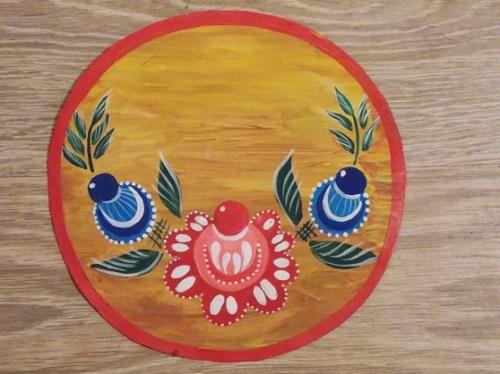
Underpainting
To put it simply, underpainting is the rough basis of the future image. These are the main elements that will become the center of the picture. If you decide to paint, for example, a wooden cutting board, then the first spot of color on it will be the underpainting. Unless, of course, you are planning to make a colored background on the board. Then you work on the background first, let it dry thoroughly, and then you start painting the underpainting.
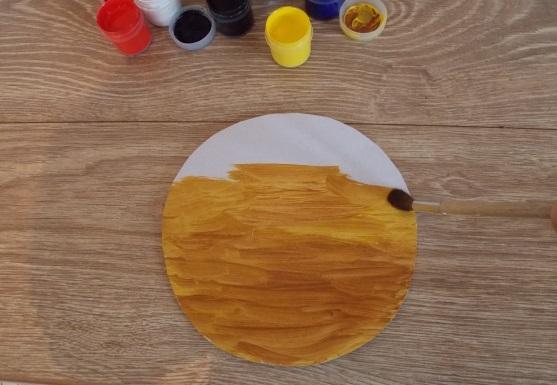
We start by drawing the background
Let's say that the main elements of the first work will be flowers - flowers that are often found in Gorodets painting. Below the center, maintaining compositional balance, you draw three circles. Two are deep blue, one (central) is pink. Next, you take blue and red colors, and draw smaller circles on the tops of these circles, which will slightly overlap the main circle.
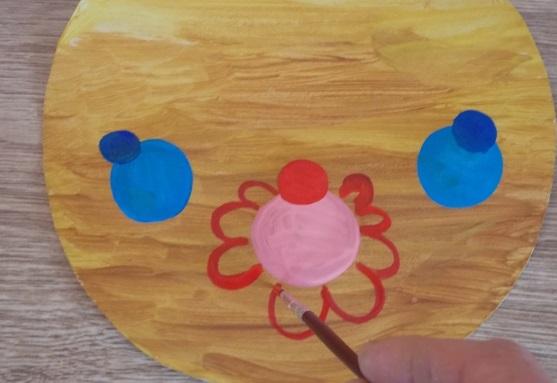
This completes the first stage. Even a child can handle underpainting (sometimes they say underpainting, this is also correct), but it is not always very easy. The point is precisely that the circles should be even, that you need to learn how to draw them immediately using paint on the background and that, most importantly, they should become the compositional center of the work. If balance does not happen, any subsequent decoration will be in vain.
Tenevka
At this stage of Gorodets painting, the artist draws the petals. By the time the petals are drawn, the circles made at the underpainting stage should be dry. When the paint has dried, paint the petals with bright contrasting paint.
Draw them without haste - although they should not be mathematically accurate and even, strong deviations in the drawing of the petals violate the compositional harmony of the image. The petals can match the color of the small circle on the underpainting. This is not necessary, but usually this combination is well perceived against the general background.

It's time to make the leaves and twigs. And here, too, you need to remember about symmetry: it makes the work beautiful, it is characteristic of the Gorodets craft, therefore any other experiments would not be appropriate here. Beginners should not take on complex greenery decorations: start small, with a couple of leaves on the sides of blue flowers, and with small stems strewn with leaves at the top of these flowers.
When you become more confident in your writing, you can make the patterns more complex. But first you should learn to draw accurately, symmetrically, with good control of color and shape. There are no double strokes in this painting, therefore, even in children’s hands, the basic techniques of the craft come to life and are mastered by novice artists.
Start of image
In order for the drawing to turn out really neat and beautiful the first time, it is not enough just desire and prepared materials. It is very important to learn the technique of applying an image. Here you need to understand how to hold the brush, how to guide it, what movements to use to depict the details of the drawing.
All Gorodets painting is carried out in three stages. The first thing to do is to apply a background onto which the drawing will be superimposed. Next, we carry out the drawing step by step.
- Underpainting. Large spots of color that will subsequently serve as the basis for the image. These are big figures. For children, the elements of underpainting are very easy.
They are applied in a thin layer and completely shaded. You need to sketch them very carefully so that there are no streaks, sagging or gaps. For a good result, it is better to paint with a flat, wide brush.
- Fabric. Brush number 2 is used. The essence of this stage is to break the underpainting into parts and highlight the details.
- Revivals. This is another technique in the Gorodets technique. Here black and white paint comes to the rescue, which highlight the accents of the picture. This stage is very difficult and requires concentration.
With black and white paint, many dots are applied to the underpainting and fabric, which add brightness and liveliness to the drawing. It is important not to overdo it here, as a large amount of animation can ruin the drawing.
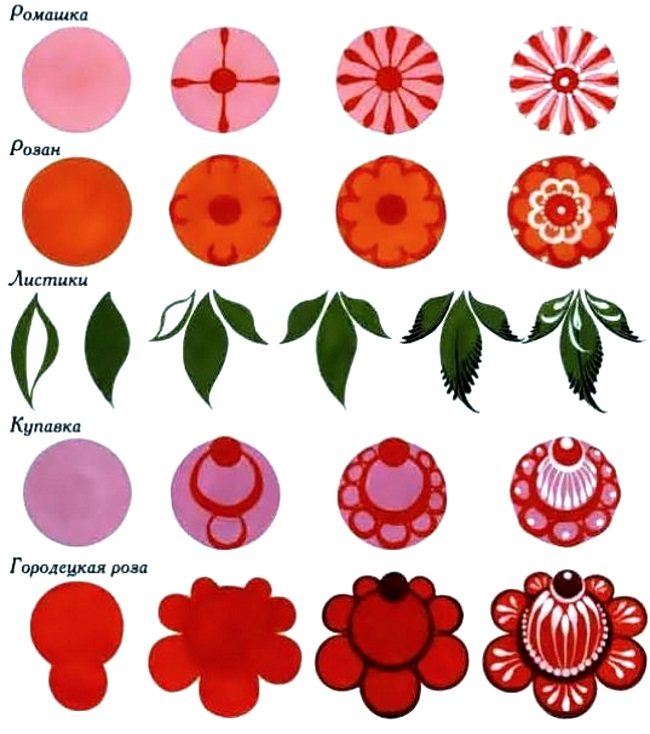
Gorodets painting will turn out very well if you learn how to hold a brush correctly. It should be perpendicular to the surface on which the design is applied.
In this case, the hand should be supported by the elbow and fixed by it, and the hand should remain mobile and free. If it is difficult for a child to hold his hand in this position for a long time, then you can rest it on the little finger. In this hand position it is easier to draw smooth and regular lines.
The last thing in drawing a Gorodets painting is to connect all the elements together step by step. Pictures should be bright and colorful.
This is the main feature of this direction in art. If the child has learned to depict elements well on paper, you can continue and offer to draw on a wooden base.
Painting in the modern world
At the beginning of the twentieth century, the Gorodets fishery practically ceased to exist. Wars, revolutions, collectivization and universal entry into collective farms significantly reduced the number of male master artists. But as soon as life began to improve, women took up writing. In the thirties, the first workshops arose, in the fifties - an artel of painters who preserved the best traditions of Gorodets writing. In 1960, the Gorodets Painting factory opened in Gorodets. Now famous craftsmen work at the factory and are training their successors.
Technique for applying pictures
Gorodets painting is an image on an uncoated base using a simple technique. Sometimes the base is primed with yellow, red or black cinnabar. All colors must be bright shades. The artist outlines the pattern, dimensions, and main elements with a pencil. And experienced masters immediately paint without a sketch. The main parts of the composition are highlighted in light tones - the underpainting (color spots, circles, outlines of leaves), thick strokes (shading) are placed on them, drawing details (petals, clothing lines). Buds and leaves are drawn between the large details. The completion is the application of liven (white) or liven (black) paint - dots and strokes are made. After drying, the finished item is coated with colorless varnish.
